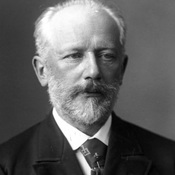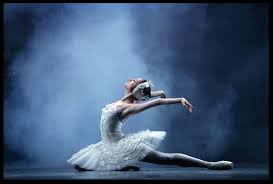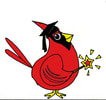
|
Russian composer Pyotr Ilyich Tchaikovsky was born on May 7, 1840, in Kamsko-Votkinsk, Vyatka, Russia. His father, Ilya, His parents sometimes took him to concerts, and after one such evening he complained that he could not fall asleep because of the music stuck in his head. Today’s listening example is The 1812 Overture. Written in 1880 to commemorate Russia's defence of its motherland against Napoleon's invading Grande Armée in 1812.The overture was conducted by Tchaikovsky himself in 1891 at the dedication of Carnegie Hall, in what became the first time a major European composer visited the United States.
|

|
Tchaikovsky was hired, or commissioned, to compose Swan Lake by the intendant, or highest administrator, of Moscow’s Russian Imperial Theaters. It is based on a Russian folk tale that tells the story of a princess who turns into a swan. It was not until after his death that Swan Lake became popular. After it’s first premiere, musicians, dancers, conductors and audiences felt the music was too complicated.
Interesting Factoid Swan Lake is known for its demanding technical skills all because of one extremely gifted ballerina, Pierina Legnani (lynn yanni). She performed with such grace and discipline, the bar was quickly set in the minds of all who saw her. It's no surprise that every ballerina to dance the part of Odette/Odile after Legnani was judged against her performance. Legnani performed 32 fouettes (a fast whipping turn on one foot) in a row – a move many ballerinas loath because of its extreme difficulty. However, the magnitude of skill required to dance the part of Odette in Swan Lake is why the ballet remains a favorite for many girls; its a goal, an aspiration to take center stage. The prestige that comes with performing Swan Lake flawlessly is invaluable, and can turn ballerinas into stars overnight. |
|
Unlike many of the composers and musicians we have learned about, Tchaikovsky was not a child prodigy. Tchaikovsky started taking piano lessons as a young child, but nobody noted any special talent or proficiency with his music at that time. Instead, he studied to become a civil servant. Denied a promotion, he entered the music conservatory in St. Petersburg at age 22 and began his serious musical studies. He graduated and accepted a post teaching at the music conservatory in Moscow, where his career as a professional composer truly began.
|
|
The score for Tchaikovsky's second ballet, "Sleeping Beauty," was written in 1889 and premiered in 1890 in St. Petersburg, Russia. It has since become one of the most famous pieces in the standard ballet repertoire. Tchaikovsky managed to write the longest ballet score of his career in a little over a month.
|
|
The Nutcracker ballet was adapted from a story called “The Nutcracker and the Mouse King” by German author E.T.A. Hoffmann. The first performance was at the famous Mariinsky Theatre in St. Petersburg, Russia in December, 1892. Surprisingly, the first production was not a success. However, the ballet has enjoyed great popularity since the late 1960’s. Major American ballet companies receive almost half their yearly ticket sales from performances of The Nutcracker.
|
|
The Nutcracker is about a girl named Clara and her dream that takes her on a magical journey; a nutcracker who is transformed into a prince; a king rat; a sugar plum fairy; and characters from different countries around the world. This music has become one of Peter Tchaikovsky’s most famous compositions.
|
|
As evidenced by the "1812 Overture," Tchaikovsky liked experimenting with new instrumentation for his compositions. In the "Dance of the Sugar Plum Fairy," he uses the celeste, an instrument that resembles a small upright piano in looks and produces a distinctive tinkling sound. The celeste was invented in 1886 and Tchaikovsky was one of the first composers to write music for it.
|
|
Tchaikovsky wrote exciting music for a ballet full of fantasy. Clara’s “dream-journey” to the Land of Sweets is like stepping into a Candy Land game. The Nutcracker features exotic dances representing chocolate from Spain, coffee from Arabia, tea from China, and candy canes from Russia. Tchaikovsky used his musical creativity to produce exciting musical images for his listeners.
|
